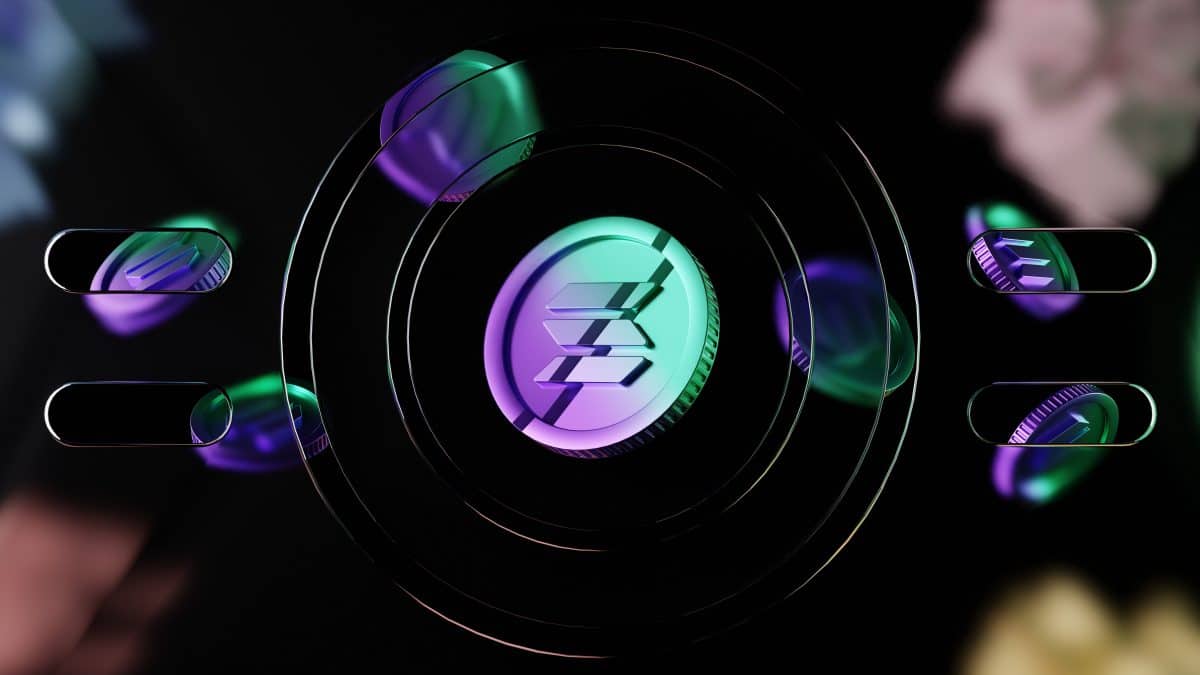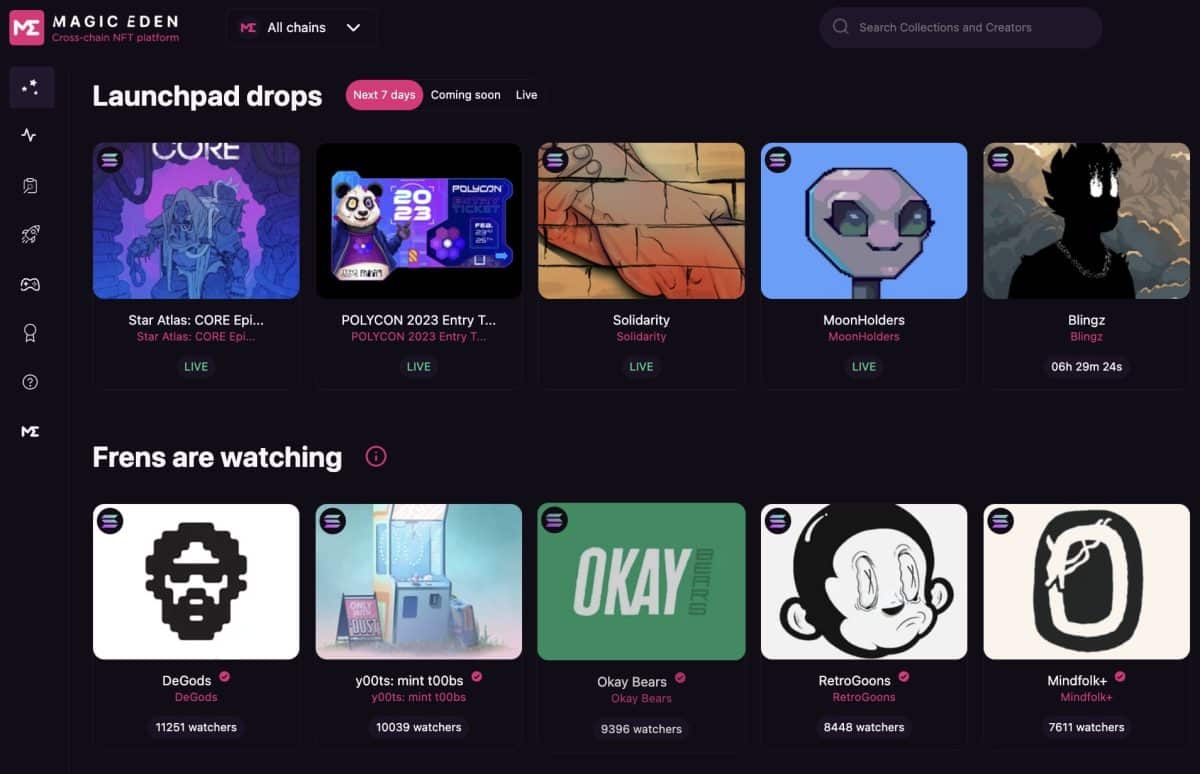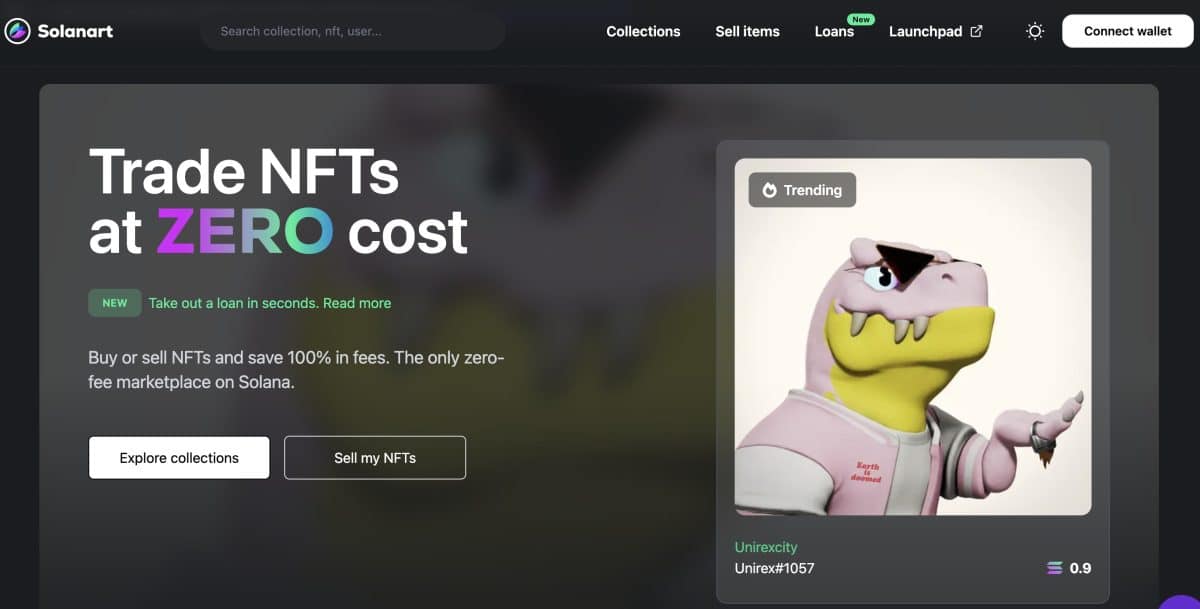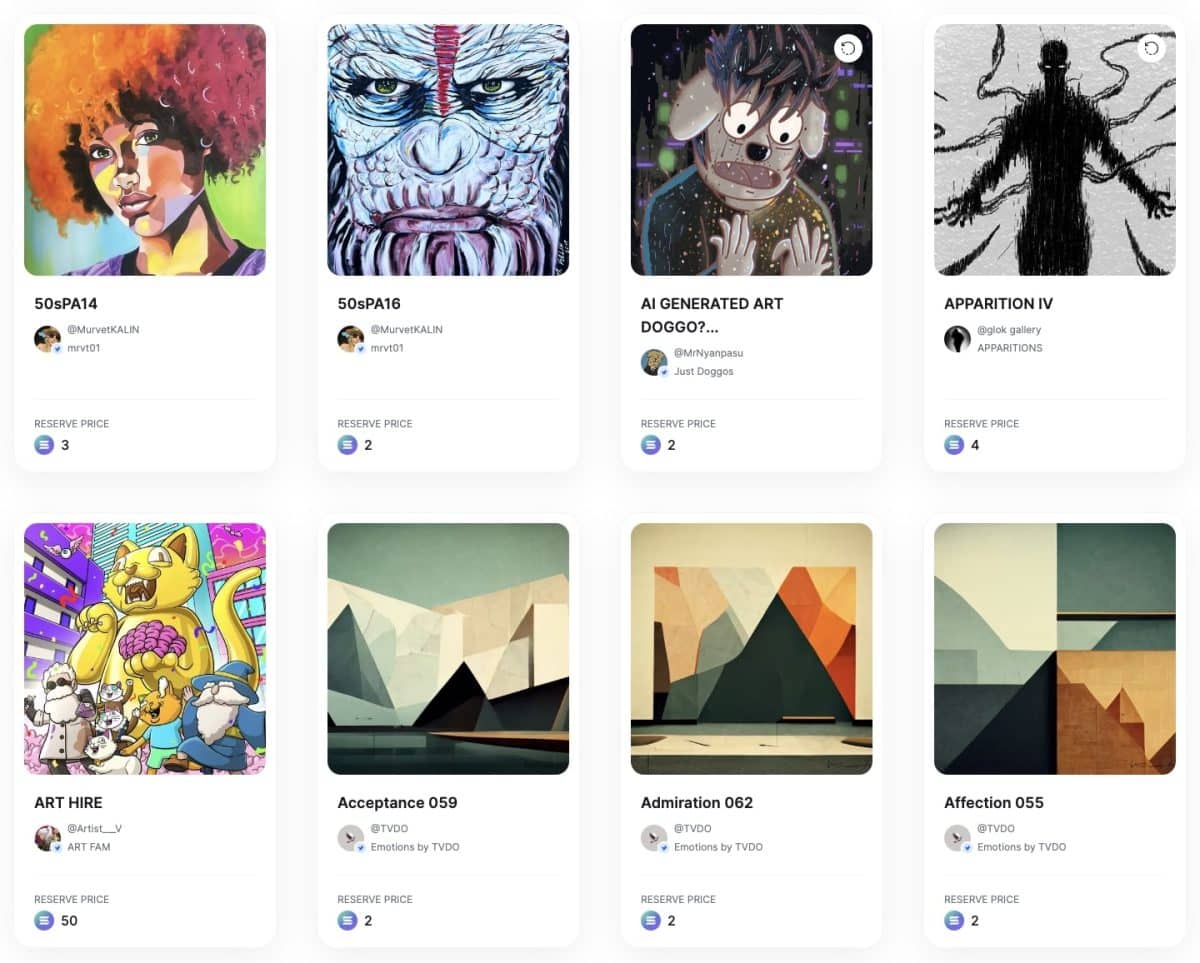All investment/financial opinions expressed by NFTevening.com are not recommendations.
This article is educational material.
As always, do your own research before making any kind of investment.
all about cryptop referances
Whether you’re an NFT veteran or a newbie, don’t miss out Solana NFTs. SOL NFTs are one of the biggest competitors to Ethereum NFTs, which currently dominate the space. With a number of dedicated Solana NFT marketplaces available right now, buying Solana NFT is easier than ever. That said, finding the best Solana NFT marketplace to suit your needs can still be daunting.
But don’t worry – we’re here to help. In this guide, we will tell you everything you need to know about the best Solana NFT marketplaces, including Magical Eden, Solseaand more.
First things first – what exactly is Solana? More importantly, why is Solana important?

Simply put, Solana is an open source blockchain network founded in 2017 that hosts smart contracts and decentralized applications (dApps). Developed by Anatoly Yakovenko, a former Qualcomm executive, Solana uses a unique consensus model called proof-of-history (PoH), an improved version of the proof-of-stake (PoS) model. Its native and utility token is the Solana (SOL) token.
In 2021, when NFTs started to go mainstream, almost all the biggest projects chose Ethereum. But soon enough, a bunch of problems appeared. Ethereum’s proof-of-work model was energy intensive, transactions were expensive and had low transaction speeds. That’s when people started looking for Ethereum alternatives.
This provided the perfect opportunity for Solana to rise to the occasion, especially since other non-Ethereum chains had yet to gain popularity. Solana solved all the above problems of Ethereum NFTs – it offers high transaction speed, low transaction fees and has relatively low energy consumption. Although Ethereum NFTs still dominate in terms of market cap and user base, Solana has emerged as its biggest competitor.
As with all NFTs, you can buy Solana NFTs from NFT marketplaces. Lucky for you, there are several marketplaces that focus on creating, buying, selling, and trading Solana NFTs. This includes, among others, Magic Eden, Solanart and Solsea. Alternatively, some Ethereum NFT marketplaces such as OpenSea have also added support for Solana NFTs.
Regardless of where you buy the Solana NFTs from, you need a Solana wallet and some SOL to make the purchase. You can buy SOL from crypto exchanges such as Binance, Coinbase and Uphold. Once you buy it, you can send the crypto to your wallet address.
Although there are many Solana NFT marketplaces, we have listed the top seven marketplaces. As the Solana market grows, we can expect more marketplaces to come on the scene. And if and when new promising players emerge, we will continue to add to this list.

In accordance DappRadar data, Magic Eden currently takes the crown as the largest Solana marketplace by trading volume of all time. As of now, the all-time trading volume has passed 2 billion dollars (at the time of writing). In comparison, however, SolSea, which occupies second place, has only reached around $32.54 million in all-time trading volume. Solanart follows in third place with around $152,000.
Now that we’ve covered the basics, let’s take a look at the best Solana NFT marketplaces:
A decentralized NFT marketplace, Magic Eden is currently the largest platform for creating, buying and selling Solana NFTs. Founded by Sidney Zhang, Jack Lu, Zhuoxun Yin and Zhuojie Zhou, Magic Eden grossed $27 million early last year to challenge OpenSea. It offers a transaction fee of 2%, with no additional cost to bid. Also, the platform has a section dedicated to Solana games. It even added Ethereum integration in August 2022.
If you are looking for Solana based art NFTs then Solar species is a great alternative. Solanart has most of the best Solana NFT collections and charges a transaction fee of 3% and a listing fee of 0.02%. Moreover, it supports a wide variety of Solana crypto wallets, making it one of the most connected Solana platforms.
Furthermore, in order to maintain the quality of the collections, Solanart first requires artists to submit an application before they can list their collections. It is also one of the few marketplaces that offers a live chat option and an “instant loans” feature. The latter allows users to borrow SOL from Solanart’s liquidity pool to make investments.

Claiming to be the first open Solana NFT marketplace, Solsea launched in August 2021. And with it, the platform brought forth a host of new features – NFTs with built-in licenses, a NFT rarity index, integrated NFT embossing and more. Apart from unique creation tools, the marketplace also supports payments in fiat. Additionally, it was one of the first platforms to launch a calendar feature to track upcoming NFT collections. Currently, apart from a 2% marketplace fee, it has no other marketplace fees.
DigitalEyes is another top-rated Solana NFT marketplace that gained popularity for its user-friendly features. It’s easy to navigate and includes most of the popular Solana NFT collections, including Frakt, Degenerate Ape Academy, and Galactic Gecko Space Garage. It also supports several Solana wallets such as Phantom, Sollet, Solflare, Solong and Slope. More importantly, it doesn’t charge creators any listing fees. However, it charges a service fee of 2.50% on all sales.
Founded in 2021, Metaplex allows creators to easily set up their own storefronts to create and sell NFTs. Essentially, the decentralized on-chain application facilitates the printing and sale of NFTs. So far, the platform claims to support 7 million creators to create 22 million NFTs. In addition, it focuses on developing a variety of no-code tools to help creators turn their art into everything from 1/1s to limited or open editions, and generative collections.
Artz is a decentralized Solana NFT marketplace, allowing anyone to create and sell their NFTs. As the name suggests, Artz focuses on art NFTs. Typically, marketplaces hold the NFTs you sell in a separate auction account. In contrast, with Artz, the NFTs on sale will remain in your wallet until sold. This way you don’t have to pay any listing fees to the platform. Although Artz has no listing fees, it does charge a 2% transaction fee. Additionally, it currently only supports the Phantom wallet.
If you are an art lover, you might want to check it out Exchange.art. Exchange.art is a unique Solana NFT marketplace, focusing on independent artists and singles. Although it charges a 2.5% transaction fee, there is no listing fee. Also, creators can use the “creator portal” to create their art NFTs, set their own royalties and sell NFTs.
It supports a variety of crypto wallets, including Phantom, Solflare, Torus, and Ledger, among others. Finally, it also has some additional features such as the ability to make an offer on any NFT, even if it is not listed for sale. If the owner accepts the offer, it’s a quick, hassle-free sale. Additionally, Exchange.art supports live auctions as well.

As you can see, when it comes to Solana NFT marketplaces, you are spoiled for choice. That said, the list above is by no means exhaustive. In addition to these, there are several other Solana NFT marketplaces you can check out, including Alpha.art, Hyperspace, and LIQNFT.
At the end of the day, the right marketplace for you depends entirely on your personal preferences and what you’re looking for. For example, if you want to buy or sell NFT art, Solanart, Exchange.art or Artz may be the right choice for you. Conversely, if you want to go for the biggest marketplace with the highest trading volumes, you should go for Magic Eden. And as always, no matter which marketplace you choose, be sure to do your own due diligence.
All investment/financial opinions expressed by NFTevening.com are not recommendations.
This article is educational material.
As always, do your own research before making any kind of investment.